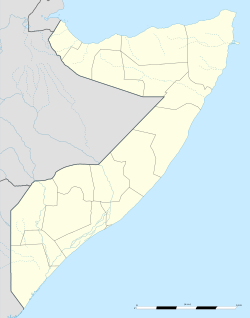This article has multiple issues. Please help improve it or discuss these issues on the talk page . (Learn how and when to remove these messages)
|
Dhobley Dhoobley Liboi-Somalia | |
|---|---|
Town | |
| Motto: Dhoobley ku Dhereg (lit., Fill up the clay [dhoob]) | |
| Coordinates: 0°24′38″N41°0′35″E / 0.41056°N 41.00972°E | |
| Country | |
| Regional State | |
| Region | Lower Juba |
| District | Dhobley District |
| Established | around 1970s |
| Government | |
| • Type | s |
| Time zone | UTC+3 (EAT) |
Dhobley formerly known as Liboi-Somalia is a strategic border town located south-western Somalia's lower juba region and approximately 0.2 KM from the Kenya border and second largest city in the Lower Juba region after Kismayo, the capital of the region Lower Juba.the town was established at around the 1970s by a group of pastrolist who settled for rearing their livestocks.
